SLVSDU5A April 2018 – November 2019 TPS57112C-Q1
PRODUCTION DATA.
- 1 Features
- 2 Applications
- 3 Description
- 4 Revision History
- 5 Pin Configuration and Functions
- 6 Specifications
-
7 Detailed Description
- 7.1 Overview
- 7.2 Functional Block Diagram
- 7.3 Feature Description
- 7.4
Device Functional Modes
- 7.4.1 Adjusting the Output Voltage
- 7.4.2 Enable Functionality and Adjusting Undervoltage Lockout
- 7.4.3 Slow-Start or Tracking Pin
- 7.4.4 Sequencing
- 7.4.5 Constant Switching Frequency and Timing Resistor (RT/CLK Pin)
- 7.4.6 Overcurrent Protection
- 7.4.7 Frequency Shift
- 7.4.8 Reverse Overcurrent Protection
- 7.4.9 Synchronize Using the RT/CLK Pin
- 7.4.10 Power Good (PWRGD Pin)
- 7.4.11 Overvoltage Transient Protection
- 7.4.12 Thermal Shutdown
- 7.4.13 Small-Signal Model for Loop Response
- 7.4.14 Simple Small-Signal Model for Peak-Current-Mode Control
- 7.4.15 Small-Signal Model for Frequency Compensation
-
8 Application and Implementation
- 8.1 Application Information
- 8.2
Typical Application
- 8.2.1 Design Requirements
- 8.2.2
Detailed Design Procedure
- 8.2.2.1 Selecting the Switching Frequency
- 8.2.2.2 Output Inductor Selection
- 8.2.2.3 Output Capacitor
- 8.2.2.4 Input Capacitor
- 8.2.2.5 Slow-Start Capacitor
- 8.2.2.6 Bootstrap Capacitor Selection
- 8.2.2.7 Output Voltage and Feedback Resistor Selection
- 8.2.2.8 Compensation
- 8.2.2.9 Power-Dissipation Estimate
- 8.2.3 Application Curves
- 9 Power Supply Recommendations
- 10Layout
- 11Device and Documentation Support
- 12Mechanical, Packaging, and Orderable Information
Package Options
Mechanical Data (Package|Pins)
- RTE|16
Thermal pad, mechanical data (Package|Pins)
- RTE|16
Orderable Information
8.2.3 Application Curves
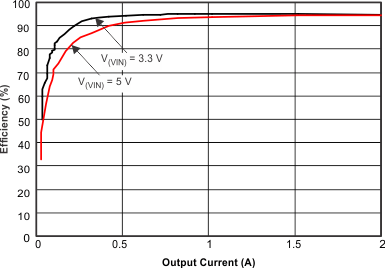
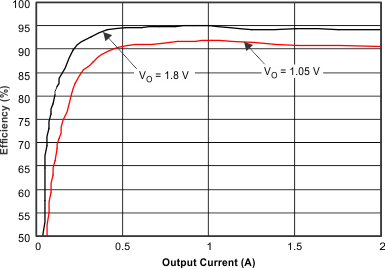
| V(VIN) = 3.3 V | f(SW) = 1 MHz | TA = 25ºC |
1 MHz, 3.3 VIN, TA = 25°C
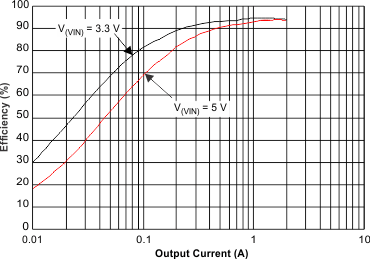
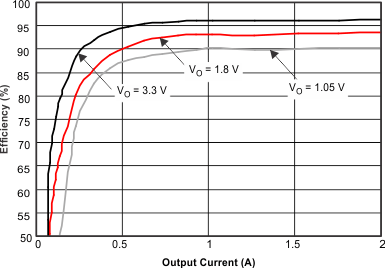
| V(VIN) = 5 V | f(SW) = 1 MHz | TA = 25ºC |
1 MHz, 5 VIN, TA = 25°C
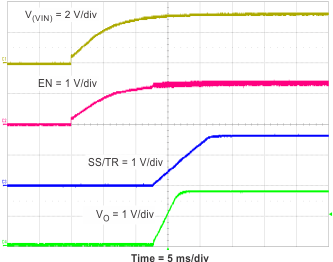 Figure 39. Power-Up VO, V(VIN)
Figure 39. Power-Up VO, V(VIN) 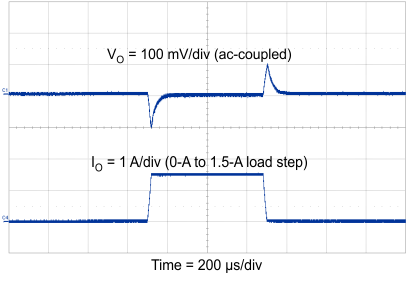 Figure 41. Transient Response, 1.5-A Step
Figure 41. Transient Response, 1.5-A Step 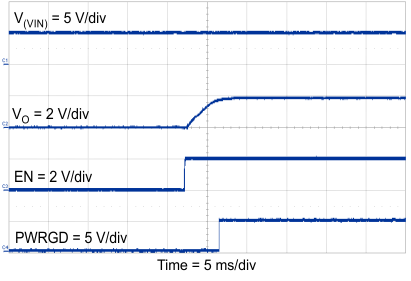 Figure 43. Power-Up VO, EN
Figure 43. Power-Up VO, EN 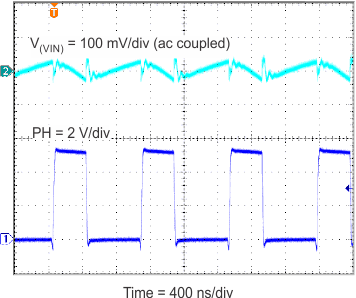 Figure 45. Input Ripple, 2 A
Figure 45. Input Ripple, 2 A 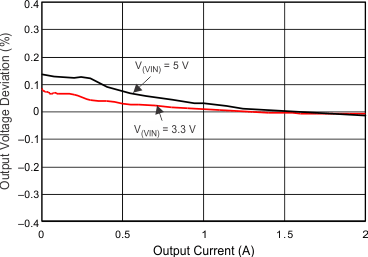
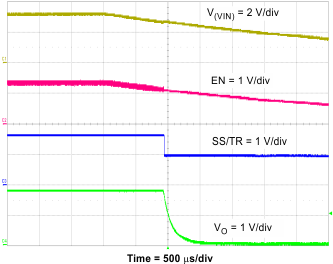 Figure 40. Power-Down VO, V(VIN)
Figure 40. Power-Down VO, V(VIN) 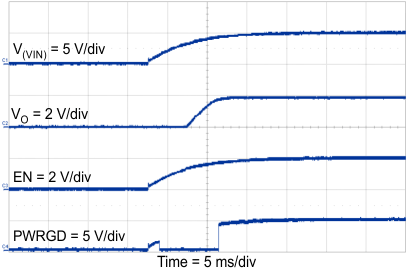 Figure 42. Power-Up VO, V(VIN)
Figure 42. Power-Up VO, V(VIN) 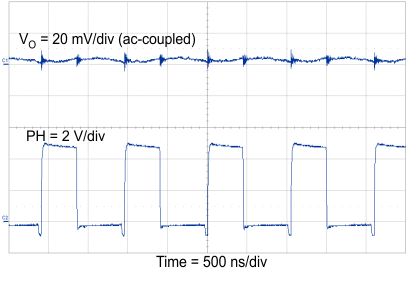 Figure 44. Output Ripple, 2 A
Figure 44. Output Ripple, 2 A 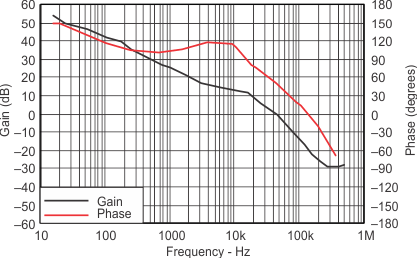
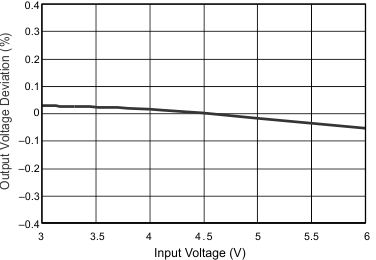
| IO = 2 A |